Syn.: Corallorhiza innata R. Br., Corallorhiza intacta Cham., Corallorhiza verna Nutt., Cymbidium corallorhiza (L.) Sw., Epidendrum corallorhizon (L.) Poir., Helleborine corallorhiza (L.) F. W. Schmidt, Ophrys corallorhiza L., Neottia corallorhiza (L.) Kuntze
Family: Orchidaceae Juss.
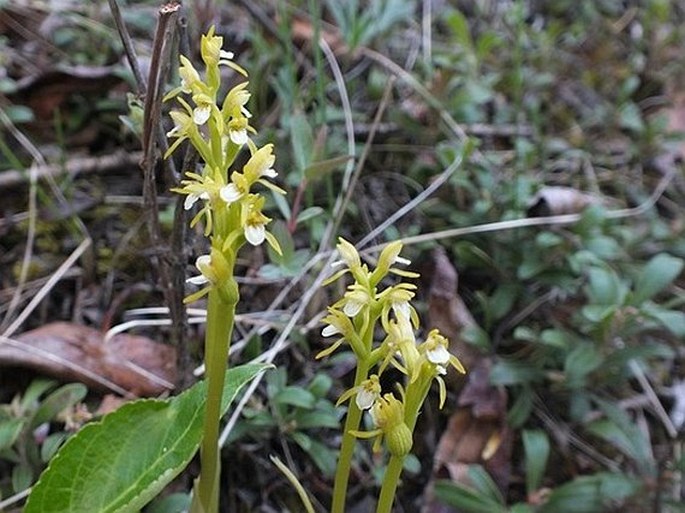
Distribution: Most of North America from Alaska and southwestern Greenland to California, absent in Arizona and south eastern states of US. Also present in Europe, Siberia and Japan.
Ecology: Coniferous, deciduous and mixed woods, swamps, mountains in the north, in cool moist habitats in the south, from sea level to 3100 m.
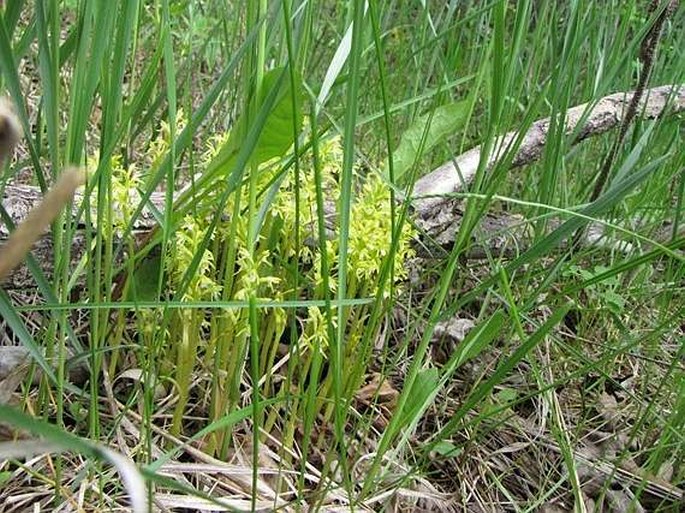
Description: Perennial saprophyte, lacking chlorophyll, from a coral-like rhizome, roots absent. Flowering stems greenish yellow, 10–30 cm tall, leaves reduced to scale-like sheaths. Inflorescence is a lax, dense raceme, 3–18-flowered; flowers pale yellowish green, 5 mm across, sepals spreading, lateral outer perianth-segments often strongly recurved; inner perianth-segments arching over and clasping column; lip white, often purple spotted; spur fused to ovary. Fruit is an elliptical capsule, 4.5–15 mm long.
Threat and protection: This species is included in the list of species protected by CITES and protected by law in Czechia, Poland, Slovakia, Hungary, Serbia and Ukraine, considered endangered in states of Connecticut, Indiana, Maryland, Ohio and Rhode Island.
Note: The common name Coralroot is a direct translation of Linne’s Corallorhiza.
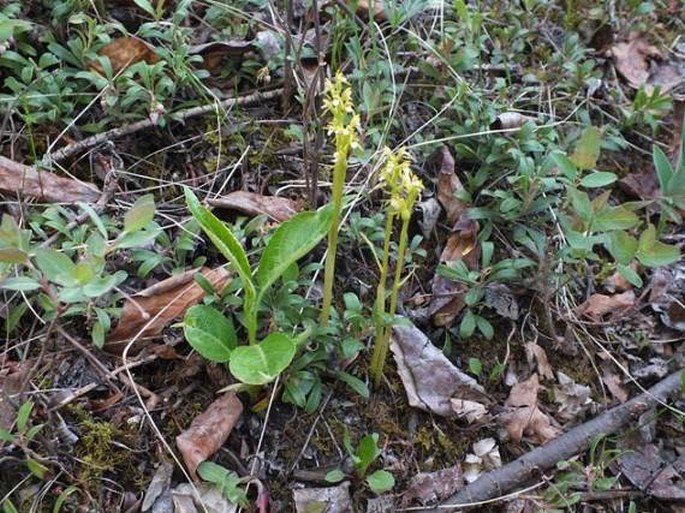
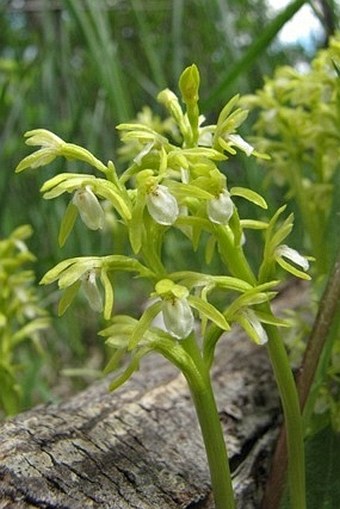
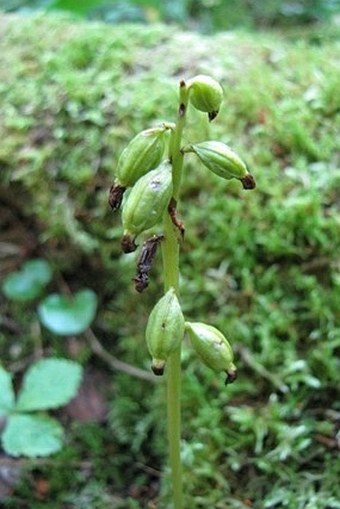
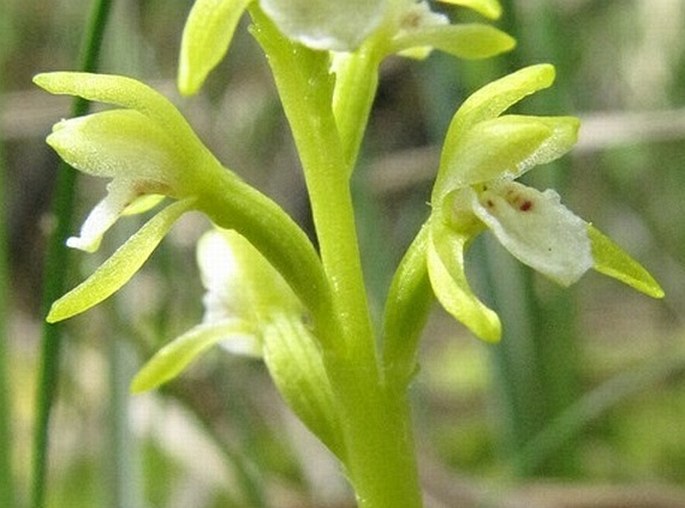
These images were taken in Canada, Alberta, Calgary, Edworthy Park (May 2014) and Bowmont Park (May 2013).


